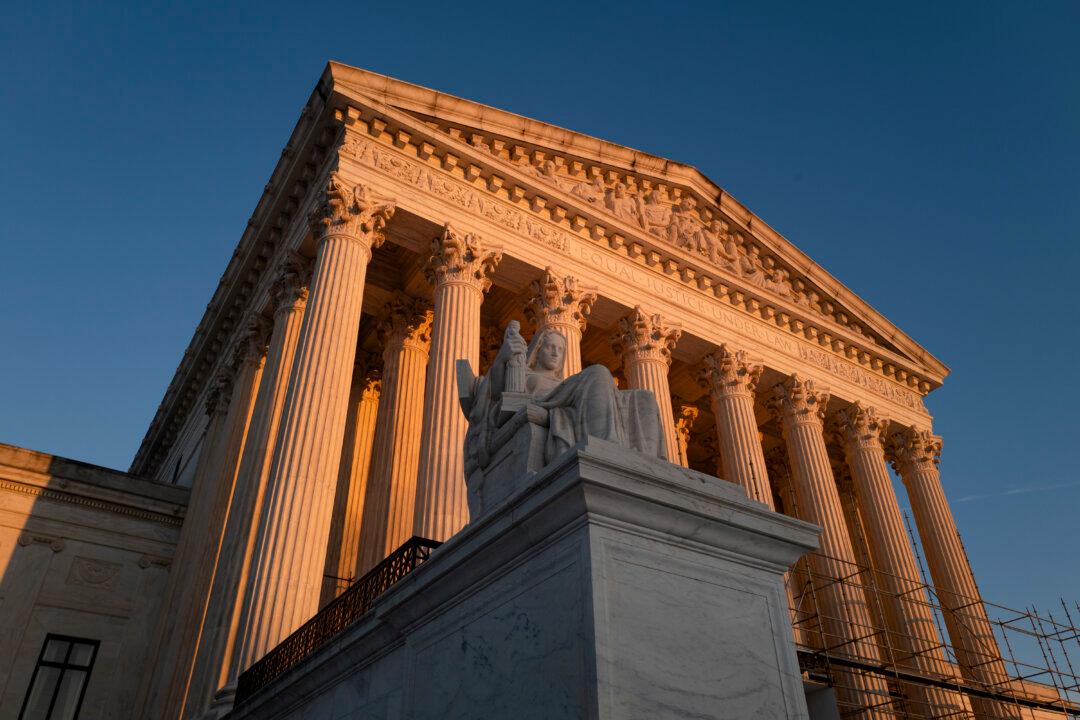The Supreme Court ruled unanimously on April 17 that Cornell University employees may pursue a class action lawsuit in which they claim that their retirement plans were mismanaged and charged exorbitant fees.
The U.S. Court of Appeals for the Second Circuit previously held that the employees’ lawsuit could not move forward for lack of evidence.
The case arose when about 30,000 Cornell University employees alleged that their employer’s defined contribution retirement plans, which had $3.3 billion in funds under management, paid excessive recordkeeping fees from 2010 to 2016.
The employees sued the respondents—the university and two investment providers, Fidelity and TIAA—in federal district court in New York in 2017.
The respondents opted for a model of collecting recordkeeping fees based on revenue sharing, as opposed to a flat fee, which tends to be less expensive.
The district court dismissed the lawsuit, holding that the employees failed to produce sufficient evidence demonstrating that the fees were not reasonable.
The Second Circuit affirmed in November 2023, ruling that the employees’ claim that the fees were unreasonable was not supported by sufficient evidence.
A pleading is a written statement filed in a legal proceeding that explains a claim, defense, or other position.
Such a document is often filed early in the process before the case goes to trial.
A fiduciary—a person or entity that exercises authority over the assets or administration of a plan—is required to act in the best interests of participants and beneficiaries of the plan.
“Fiduciaries are prohibited from engaging in self-dealing and must avoid conflicts of interest that could harm the plan,” the summary stated.
At the Jan. 22 hearing, the employees’ attorney, Xiao Wang, said his clients were harmed because the investment providers went beyond providing recordkeeping services.
He said Fidelity and TIAA “bundled” the recordkeeping services “with investment products, and those investment products, in turn, had operating expenses, and those operating expenses were then shared via revenue sharing to the plan to pay for recordkeeping.”
“Now that bundling resulted in Fidelity and TIAA pushing ... its own products, its own actively managed products, leading to higher expense ratios and, therefore, greater recordkeeping fees,” Wang said.
Justice Brett Kavanaugh told Wang that some industry groups say letting plaintiffs argue that a prohibited transaction has taken place could boost costs for employers and spur frivolous litigation.
“This expanded litigation threat would be near limitless because every college and university relies on third-party service providers,” the justice said.
Cornell University’s attorney, Nicole Saharsky, told the justices that two dozen lawsuits “have been filed against university plans,” and not one plaintiff has prevailed in court.
“This has been like millions of dollars that these universities have spent on discovery and individuals who have been named personally and had to live under a cloud for years and years,” the lawyer said.
In the new opinion, Sotomayor wrote that the Supreme Court is now holding “that plaintiffs seeking to state [an ERISA] claim must plausibly allege that a plan fiduciary engaged in a transaction proscribed therein, no more, no less.”
Section 1106 of the statute “prohibits ERISA plan fiduciaries from causing a plan to enter into certain transactions with parties in interest,” she wrote.
A “party in interest” is one with a direct stake or legal right in a transaction or business arrangement.
Section 1108(b)(2)(A) exempts “any transaction that involves ‘contracting or making reasonable arrangements with a party in interest for office space, or legal, accounting, or other services necessary for the establishment or operation of the plan, if no more than reasonable compensation is paid therefor,’” the justice wrote.
Sotomayor wrote that the issue is whether, “to state a claim under [Section] 1106, a plaintiff must plead that [Section] 1108(b)(2)(A) does not apply to an alleged transaction between a plan and a party in interest.”
“The answer is no,” she wrote.
“The court holds that [Section] 1108 sets out affirmative defenses, so it is defendant fiduciaries who bear the burden of pleading and proving that a [Section] 1108 exemption applies to an otherwise prohibited transaction under [Section] 1106.”
The Supreme Court reversed the decision of the Second Circuit and returned the case to that court “for further proceedings consistent with this opinion.”







